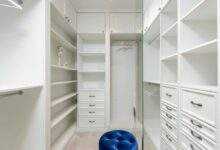Let There Be Light (Naturally): Energy-Saving Lighting Solutions for Your Home

Table of Contents
Lighting is more than just a practical necessity; it defines the atmosphere of your home, impacts your energy bills, and even influences your environmental footprint. With the evolution of lighting technology, homeowners now have a plethora of energy-saving options that offer both economic and ecological benefits. In this comprehensive guide, we’ll explore various energy-efficient lighting solutions, from the latest LED bulbs to advanced smart lighting systems. Discover how these choices can illuminate your home while saving money and reducing energy consumption. Our focus will be on energy-efficient lighting, smart light bulbs, and natural light solutions for home.
Benefits of Energy-Saving Lighting Solutions
Save Money on Electricity Bills
Switching to energy-efficient lighting is one of the simplest ways to reduce your electricity bills. Traditional incandescent bulbs consume significantly more power than their modern counterparts. For instance, replacing a 60-watt incandescent bulb with a 10-watt LED bulb can save approximately 50 watts per bulb. Over the course of a year, these savings can add up considerably.
Example:
- Energy Star Light Bulb Savings Calculator: Use this calculator to estimate how much you can save by switching to LED bulbs.
Reduce Energy Consumption
Energy-efficient lighting solutions are designed to use less electricity while providing the same level of brightness. LED bulbs, for instance, use up to 80% less energy than traditional incandescent bulbs. By reducing your energy consumption, you not only lower your bills but also decrease the overall demand on power plants, contributing to a reduction in greenhouse gas emissions.
Example:
- U.S. Department of Energy: The Department of Energy’s guide on energy-efficient lighting provides comprehensive information on how to reduce energy consumption.
Eco-Friendly Lighting
Switching to energy-efficient bulbs like LEDs is better for the environment. These bulbs contain no harmful materials such as mercury, which is found in some traditional lighting options. Additionally, their longer lifespan means fewer bulbs end up in landfills, promoting sustainability and reducing waste.
Example:
- Green America: Learn more about the environmental benefits of energy-efficient lighting.
Brighter Home Lighting
Modern lighting solutions often provide brighter and more consistent light compared to older bulbs. LEDs, in particular, come in various color temperatures and brightness levels, allowing you to tailor the lighting in each room to your needs. This flexibility enhances the functionality and comfort of your home.
Example:
- Philips Lighting: Explore Philips’ range of LED bulbs to find the perfect brightness and color temperature for your home.
Long-Lasting Light Bulbs
Energy-efficient bulbs, especially LEDs, have a much longer lifespan than traditional incandescent or halogen bulbs. An average LED bulb can last up to 25,000 hours, compared to around 1,000 hours for an incandescent bulb. This longevity means fewer replacements, saving you time and money.
Example:
- Cree LED Bulbs: Known for their durability and long lifespan, Cree’s LED bulbs are a reliable choice for any home.
Types of Energy-Saving Lighting
LED Light Bulbs
LED (Light Emitting Diode) bulbs are the most popular energy-efficient lighting option available today. They are known for their long lifespan, low energy consumption, and versatility. LEDs are available in various shapes, sizes, and color temperatures, making them suitable for any application, from task lighting to ambient lighting.
Examples:
- Philips Hue White and Color Ambiance: These smart LED bulbs can be controlled via a smartphone app, offering a range of color options and brightness levels.
- Cree LED Bulbs: Known for their high efficiency and durability, suitable for various home lighting needs.
LED Light Strips
LED light strips offer a flexible lighting solution that can be used for accent lighting, under-cabinet lighting, or even outdoor lighting. These strips are easy to install and can be cut to fit any space, providing a customizable and energy-efficient lighting option.
Examples:
- Govee Smart LED Strip Lights: These strips can be controlled via an app or voice assistants, allowing for easy adjustments to color and brightness.
- HitLights LED Strip Lights: Known for their durability and brightness, ideal for both indoor and outdoor use.
LED Panel Lights
LED panel lights are designed to provide bright, even lighting for larger spaces. They are typically installed in ceilings and are an excellent replacement for traditional fluorescent fixtures in kitchens, offices, and other areas that require consistent, high-quality lighting.
Examples:
- Lithonia Lighting LED Flat Panel: These panels are energy-efficient and offer a sleek, modern look.
- Hykolity LED Flat Panel Light: Known for its easy installation and bright, even lighting.
Smart Light Bulbs
Smart light bulbs can be controlled remotely via smartphone apps, allowing you to adjust brightness, color, and even set schedules. They often integrate with home automation systems, providing a convenient and energy-efficient lighting solution.
Examples:
- Philips Hue Smart Bulbs: These bulbs offer a wide range of colors and can be controlled via app or voice assistants.
- LIFX Smart Bulbs: Known for their brightness and wide color range, compatible with various smart home systems.
Skylights
Skylights provide natural light, reducing the need for artificial lighting during the day. They can be installed in various parts of the home, such as the living room, kitchen, or bathroom, and come in different designs to suit your needs and preferences.
Examples:
- VELUX Skylights: Known for their durability and energy efficiency, offering various styles and sizes.
- Sun-Tek Skylights: These skylights are designed to maximize natural light while minimizing heat transfer, improving overall energy efficiency.
Solar-Powered Lights (Outdoor)
Solar-powered lights are an excellent choice for outdoor lighting. They harness sunlight during the day and store it in batteries, which power the lights at night. These lights are easy to install and require no wiring, making them a convenient and eco-friendly option.
Examples:
- LITOM Solar Lights: These lights are durable, bright, and perfect for illuminating outdoor spaces like gardens, pathways, and patios.
- URPOWER Solar Lights: Known for their efficiency and reliability, ideal for various outdoor applications.
Dimmer Switches
Dimmer switches allow you to adjust the brightness of your lights, providing the right amount of light for different activities and moods. Using dimmer switches can also extend the life of your bulbs and save energy.
Examples:
- Lutron Caseta Wireless Dimmer: A smart dimmer switch that can be controlled via app or voice assistants, offering seamless integration with home automation systems.
- Leviton Decora Smart Dimmer: Known for its easy installation and compatibility with various smart home platforms.
Natural Light Solutions for Home
Maximizing Natural Light
Maximizing natural light in your home can significantly reduce the need for artificial lighting during the day. Simple changes, such as using light-colored paints, strategically placing mirrors, and keeping windows clean, can help make the most of available natural light.
Examples:
- Light Shelves: These horizontal surfaces placed above eye level reflect natural light deeper into the room, increasing brightness without additional energy consumption.
- Reflective Surfaces: Using reflective surfaces like mirrors and glossy finishes can enhance natural light distribution in your home.
Daylight Harvesting Techniques for Homes
Daylight harvesting involves using sensors to adjust artificial lighting based on the amount of natural light available. This technique not only saves energy but also ensures a comfortable lighting environment throughout the day.
Examples:
- Daylight Sensors: Sensors like the Lutron Radio Powr Sav
r automatically adjust lighting based on natural light levels, optimizing energy savings.
- Automated Blinds: Somfy’s automated blinds can be programmed to adjust based on the position of the sun, maximizing natural light while reducing glare and heat gain.
Installing Skylights and Solar Tubes
Skylights and solar tubes are excellent ways to bring more natural light into your home. While skylights provide direct natural light, solar tubes channel sunlight through a reflective tube, illuminating even windowless rooms.
Examples:
- VELUX Sun Tunnel Skylights: These solar tubes are easy to install and can bring natural light into dark, windowless spaces like hallways and bathrooms.
- Solatube Daylighting Systems: Known for their efficiency and brightness, Solatube systems can be installed in various parts of the home to enhance natural light.
Using Light-Colored Paints and Finishes
Light-colored paints and finishes reflect more light, making rooms appear brighter and more open. Using white or pastel colors on walls, ceilings, and furniture can maximize the impact of natural light.
Examples:
- Benjamin Moore White Paints: Offers a wide range of white and light-colored paints that can enhance natural light in any room.
- Sherwin-Williams Light Reflective Value (LRV): Learn about LRV, which measures the percentage of light a color reflects, helping you choose the most reflective shades.
Reflective Surfaces and Mirrors
Strategically placing mirrors and using reflective surfaces can amplify natural light, making rooms appear larger and brighter. Mirrors can be placed opposite windows to reflect light into darker areas, while reflective furniture and decor can enhance the overall brightness.
Examples:
- IKEA Mirrors: Offers a variety of mirrors in different styles and sizes, perfect for enhancing natural light in any room.
- Houzz Reflective Decor: Explore a range of reflective decor items that can help brighten up your space.
Upgrading to energy-saving lighting solutions not only benefits your wallet but also contributes to a more sustainable and eco-friendly lifestyle. From switching to LED bulbs to incorporating smart lighting systems and maximizing natural light, there are numerous ways to enhance your home’s lighting while reducing energy consumption. By making informed choices and investing in the right products, you can create a brighter, more energy-efficient home for you and your family.
FAQ Section
1. How much can I save by switching to LED bulbs?
Switching to LED bulbs can save you up to 80% on your lighting energy costs compared to traditional incandescent bulbs. For a more precise estimate, use the Energy Star Light Bulb Savings Calculator.
2. What are smart bulbs, and how do they work?
Smart bulbs are LED lights that can be controlled via smartphone apps or voice assistants. They allow you to adjust brightness, colors, and schedules remotely. For more information, check out Philips Hue and LIFX Smart Bulbs.
3. What is the difference between lumens and watts?
Lumens measure the brightness of a light bulb, while watts measure the energy consumption. Modern bulbs, like LEDs, use fewer watts to produce the same number of lumens as traditional bulbs. Learn more from Energy.gov.
4. Are LED bulbs safe for the environment?
Yes, LED bulbs are environmentally friendly. They contain no harmful chemicals, have a long lifespan, and use less energy, reducing carbon footprint and waste. Read more on Green America.
5. Can I use LED bulbs in any fixture?
Most LED bulbs are designed to fit standard fixtures, but it’s essential to check the compatibility, especially for dimmable fixtures or enclosed spaces. For guidance, visit Philips Lighting.
6. How do dimmer switches save energy?
Dimmer switches reduce the power sent to the bulb, allowing you to lower the brightness and save energy. Using dimmers can also extend the life of your bulbs. More information is available from Lutron.
7. What are the benefits of daylight harvesting?
Daylight harvesting uses natural light to reduce the need for artificial lighting, saving energy and creating a more pleasant indoor environment. Check out solutions from Lutron and Somfy.
8. How do I choose the right color temperature for my home?
Color temperature is measured in Kelvin (K). Warm white (2700K-3000K) is ideal for living areas and bedrooms, while cool white (3500K-4100K) is suitable for kitchens and workspaces. Find more details on Philips Lighting.
9. Are solar-powered outdoor lights reliable?
Yes, modern solar-powered lights are highly reliable, using advanced solar panels and batteries to provide consistent lighting, even in low sunlight conditions. Explore options from LITOM and URPOWER.
10. What should I consider when upgrading my home lighting?
Consider factors like energy efficiency, brightness, color temperature, fixture compatibility, and your specific lighting needs and preferences when upgrading your home lighting. For more tips, visit Energy.gov.








